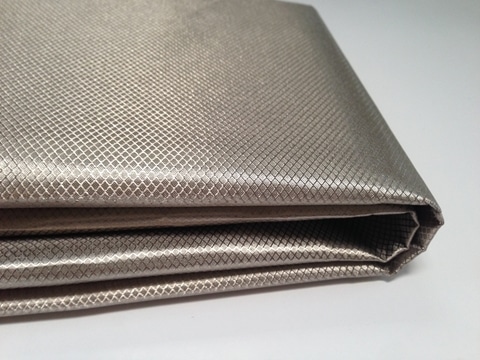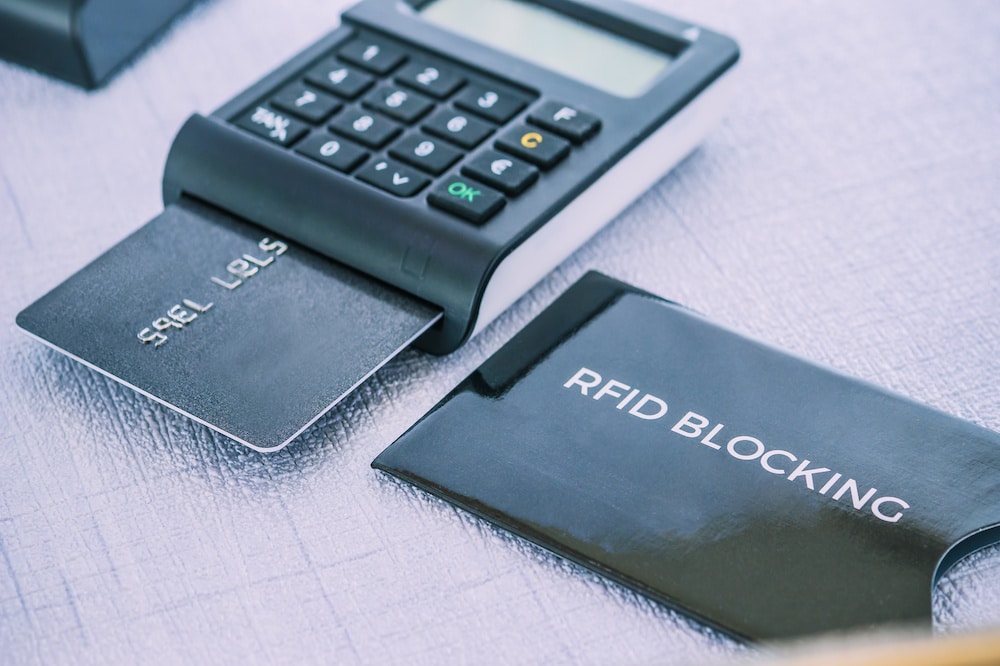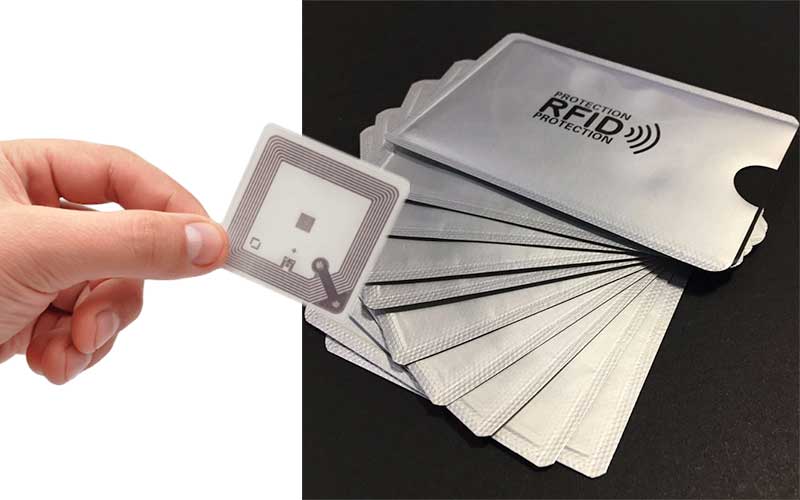Types of RFID Blocking Materials:
Metal: The Primary Material of RFID
Metal is the primary material used to make RFID blocking shields.
This is because of the natural properties of metals and its ability to interact with electric energy.
Metals can generate electromagnetism that can be vital in blocking waves similar to what is emitted by an RFID reader.
The RFID Reader
When an RFID reader releases energy to get information from a tag, the right kind of metal can prevent the reader from accessing the data.
The metal will form a magnetic field that can block the flow of information from one point to another.
The RFID reader can be an excellent electricity source as it powers and activates the wallet’s magnetic field.
Because of that, RFID-protected wallets wouldn’t have to get other energy sources to work.
The RFID’s Magnetic Shield
The magnetic shield created by the RFID reader doesn’t actually block waves from the RFID reader, it simply provides an alternative path for them around the wallet.
Since there are many different types of metals and each metal has its own unique set of properties, not all metals are ideal in creating a wallet’s RFID blocking shield.
Now, what metals can you specifically use to make RFID blocking materials?
The most used metals for RFID blocking materials are copper, aluminum, and alloy nickel, among others.
In particular, the one that is easiest to use is aluminum.
Is it possible to do RFID blocking with aluminum foil?

Yes, it is possible successfully block RFID with aluminum foil.
It can work by simply wrapping it around your cards or wallet.
In fact, many people actually use aluminum foil around their cards’ as a homemade, cheap RFID blocker.
Despite that, there are numerous reasons why aluminum foil may not be a recommended permanent solution.
First of all, the foil is not as durable and creases or can tear easily.
Not to mention having your wallet or cards wrapped in foil may not look great.
You are better off just purchasing an RFID sleeve or RFID wallet than wrapping your card in aluminum foil.
With this, you can provide your wallet with an acceptable fashion value, including security.
RFID wallets are one of the most popular wallets on the market as they are becoming more necessary for preventing RFID cloning and theft.
These wallets have metals added as linings within the seams that the naked eye cannot see.
The lining can either have multiple metal options or just a simple foil of aluminum that we will eventually discuss.
The RFID Metal’s Permeability
Permeability is a major factor in a metals ability to create a shield against waves of an RFID reader.
This is the ability to perform magnetic fields.
There are various levels of capacity that different metals possess.
Mu-metal is most highly effective metal in RFID blocking.
Mu-metal is an alloy with a maximum of 80% nickel, copper, iron, molybdenum, and chromium.
It can only be processed and created as it doesn’t naturally occur.
Mu Metal: High Permeability
Mu-metal has high permeability
The Greek letter mu (μ) is where it got its name and people use this to represent permeability in calculations for physics and engineering.
British scientists Henry J. Garnett and Willoughby S. Smith developed this alloy in the early 20th century and used it to construct Telegraph cables.
However, the Mu-metal only became effective in blocking RFID readers with low-frequency magnetic fields that are below 100 kHz.
If you want to have higher frequencies blocked, you need to use a different metal form.
In this regard, the most effective and common one is what people now know as the Faraday cage or Faraday shields.
Michael Faraday, a well-known English scientist, invented this technology in the year 1836.
Faraday Shields
Farady shiels are created by taking thin metal wires and weaving them into soft and flexible fabric.
This metal fabric can behave similarly to a textile fabric that gets sewn as a lining under the leather for wallets.
These Faraday shields work differently than aluminum foil.
Instead of bending the waves and sending them around the wallet, the lining of the Faraday shield will absorb the RFID reader’s energy to create a protective layer.
The external electric field forms on your wallet’s surface and trains the RFID reader on it.
It can cause the wallet to experience electric charges that distribute to cancel the effect of the field.
You can have the Faraday shield used in any other product that would require protection against RFID snooping, like the Faraday bag that people use to carry any electronic item like passports, phones, and laptops.
Besides the security perspective, the Faraday shield is similar to textile fabric that can improve your wallet’s aesthetics inside and outside.
The Characteristics of Metals that you can use in RFID Blocking

Let us now change our focus from knowing what RFID blocking materials are made to the fundamental characteristics that would metals the preferred choice.
These are the characteristics that nickel, aluminum, and copper have, which is why they are great in creating RFID blocking shields.
Of these, here are the essential ones:
Affordability
Metals that you can mainly use to build RFID shields for blocking, like aluminum, can easily be available and affordable.
You can say the same for metals that can form the alloy Mu-metal.
High Permeability
Metals that are used to create an RFID blocking shield need to have a great tendency to naturally generate magnetic fields whenever an electric surge directly gets to them.
Malleable and Ductile
Being soft and pliable is also vital.
Since you need to turn these metals into thin threads or foils to create fabric, it should withstand pulling and stretching.
Among the metals that are highly malleable and ductile are Mu-metal and Aluminum.
Since their boiling point is low, they are easy to work with.
Rusting and Corrosion Resistant
It will always be better to get a metal that does not rust or corrode instead of one that ends up doing this for many reasons.
They can last so much longer and don’t create a mess or rote whenever it becomes exposed to elements such as humidity.
Mu-metal and aluminum do not corrode or rust easily.
Lightweight
Whenever you use metals and carry them around frequently, it would be vital to make sure they aren’t heavy.
No one would surely want to have a wallet that is too heavy to bear in their pocket.
Among the lightest metals is aluminum.
Compared to the other metals, Mu-metal is also not too heavy.
Non-Toxic
Many metals can be toxic, so it can be dangerous to have these in items such as wallets.
Metals that people use to make the RFID blocking shield should not be radioactive or poisonous.
Aluminum is safe as it is what people use in foils whenever they package their food, so using this would not pose any danger to your health.
Doesn’t Overreact
Some metals can react to other compounds and elements in nature, especially water and oxygen.
It would be safe to use Mu-metal and Aluminum as they don’t overreact to things they contact.
Recyclable
In the creation of the RFID blocking shield, all the metals used can be reusable.
Because of that, they are not just cheap but are great in protecting the environment.
